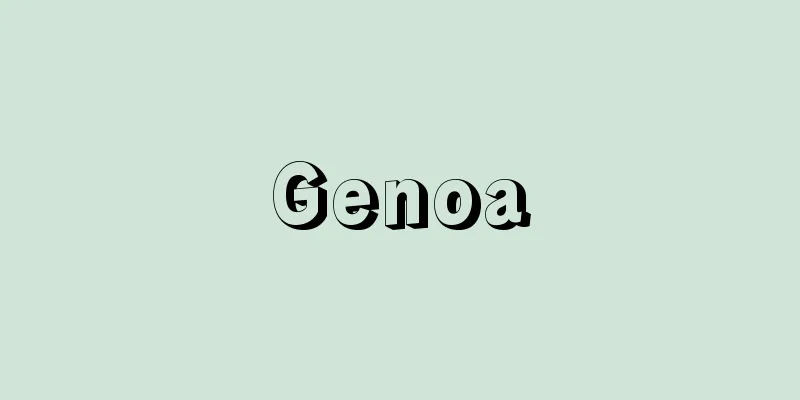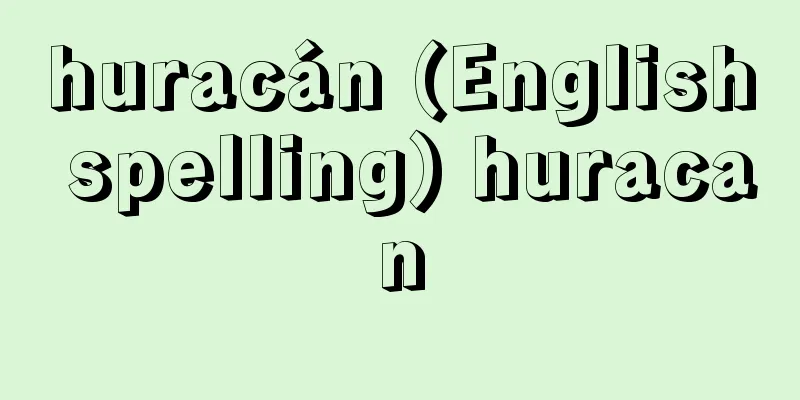Renal failure - jinfuzen (English spelling)

|
Renal insufficiency, also known as renal failure, is a condition in which renal function is severely impaired and it becomes difficult to maintain a normal internal environment. In addition to renal failure caused by damage to the renal parenchyma, there is prerenal renal failure caused by renal circulatory failure and postrenal renal failure caused by obstruction of the urinary tract. In general, renal insufficiency is classified as acute or chronic depending on its onset. [Eiichi Kato] Acute renal failureAcute renal failure is diagnosed when symptoms include a urine output of less than 400cc per day (oliguria) for several days. The most common cause is after surgery, followed by severe burns, large wounds, drug poisoning, and sunstroke. One cause is myoglobin produced by muscle crush that blocks the lumen of the renal tubules, and another is when low blood pressure (maximum 60 millimeters of mercury or less) continues for several hours, causing renal blood circulation disorders that lead to necrosis of the renal tissue. At first, there are no symptoms other than oliguria, but later, as electrolytes and urea nitrogen are not excreted, symptoms of urea such as nausea, vomiting, itchy skin, excitement, drowsiness, etc. also appear as days go by. Also, after a few days, edema and dyspnea due to pulmonary congestion caused by heart failure appear as a result of oliguria. Treatment is divided into palliative therapy that focuses on diet, and artificial kidney or peritoneal lavage. The former involves fasting for the most part, giving only a small amount of water to quench thirst, administering about 500cc of glucose via drip, and waiting for urine to be produced, but with the recent spread of dialysis centers, if the patient remains anuria for three days, preventive dialysis should be initiated. [Eiichi Kato] Chronic renal failureChronic renal failure is a condition in which renal function gradually declines, blood urea nitrogen rises (normal value is 20 milliliters), and serum electrolyte abnormalities (hyperkalemia, etc.) occur. The most common underlying disease is chronic nephritis, but other conditions such as high blood pressure, cystic kidney disease, diabetic nephropathy, and gouty kidney disease can also lead to this condition in the terminal stages. If the condition progresses further, it can cause uremia. Subjective symptoms include polyuria and dry mouth, and sometimes general fatigue, loss of appetite, nausea, vomiting, and itchy skin, but there may be no subjective symptoms. Objective symptoms include moderate or mild proteinuria and microscopic hematuria in the urine, and normal or mildly elevated blood pressure. Renal function is significantly reduced, with glomerular filtration rate of 30cc/min or less, renal plasma flow rate of 125cc/min or less, PSP (phenolsulfonphthalein) 15-minute value of 10% or less, and maximum urine concentration of 1.020 or less. Treatment is divided into palliative care and dialysis. The former is aimed at maintaining nitrogen balance by restricting protein intake, for example, by maintaining blood urea nitrogen at 50 milligrams or less by a diet of 25 grams of protein and one egg per day, and this can be sustained. The latter is a method of compensating for the kidney's function by hemodialysis using an artificial kidney or peritoneal dialysis. In recent years, continuous ambulatory peritoneal dialysis (CAPD), which is more efficient for returning patients to society, has become more common. Furthermore, dialysis therapy also places restrictions on food, water intake, and social activities, so efforts are continuing to promote kidney transplants as the number of patients increases rapidly. [Eiichi Kato] [Reference items] | | | | | | | |Source: Shogakukan Encyclopedia Nipponica About Encyclopedia Nipponica Information | Legend |
|
腎機能不全ともいい、腎機能が高度に障害され、生体の内部環境を正常に維持することが困難になった状態をいう。腎実質の障害による腎性腎不全のほか、腎循環不全による腎前性、尿路の閉塞(へいそく)による腎後性の腎不全がある。一般に、その発症によって急性と慢性に分けられる。 [加藤暎一] 急性腎不全症状としては、1日400cc以下の尿量(乏尿)が数日間続いたときに急性腎不全と診断される。原因としてもっとも多いのは手術後であり、大やけど、大きな創傷、薬物中毒、日射病などがこれに続く。筋肉の挫滅(ざめつ)によって生じたミオグロビンが尿細管腔(くう)を閉塞することが一つの原因であり、低血圧(最高60ミリメートル水銀柱以下)が数時間続き、腎の血行障害によって腎組織が壊死(えし)に陥ることがいま一つの原因である。 初めは乏尿のほかは無症状であるが、のちには電解質や尿素窒素が排出されないため日を追って尿素症状としての悪心(おしん)、嘔吐(おうと)、皮膚のかゆみ、興奮、傾眠などがみられる。また乏尿の結果、浮腫(ふしゅ)や心不全由来の肺うっ血による呼吸困難が現れるのは数日後である。 治療は、食事を主体とする姑息(こそく)的療法と、人工腎臓か腹膜灌流(かんりゅう)を行う方法に分かれる。前者は、ほとんど絶食して渇をいやす程度のわずかな量の水を与え、点滴で500cc程度のブドウ糖を入れ、尿が出るのを待つが、近年では透析センターの普及もあり、3日無尿が続けば、予防的に透析療法を行うべきである。 [加藤暎一] 慢性腎不全慢性腎不全は腎機能がしだいに低下し、血中尿素窒素が上昇し(正常値20ミリ%)、血清電解質の異常(高カリウム血症など)をきたした状態をいう。原病のうちでもっとも多いのは慢性腎炎で、そのほか高血圧、嚢胞(のうほう)腎、糖尿病性腎症、痛風腎なども末期になればこの状態になる。さらに進行すれば、尿毒症をおこす。 自覚症状としては多尿と口渇があり、ときに全身倦怠(けんたい)、食欲不振、悪心、嘔吐、皮膚のかゆみなどがあるが、自覚症状を伴わないこともある。他覚的には尿に中等度または軽度のタンパク尿と顕微鏡的血尿があり、血圧は正常または軽度に上昇する。腎機能は著しく低下し、糸球体濾過(ろか)値30cc/分以下、腎血漿(けっしょう)流量125cc/分以下、PSP(フェノールスルホンフタレイン)15分値10%以下、濃縮力最高尿比重1.020以下である。 治療は姑息的療法と透析療法に分かれる。前者は、摂取するタンパク質を制限することによって窒素平衡を維持させようとするもので、たとえばタンパク質1日25グラムに鶏卵1個を加える食事によって血中尿素窒素が50ミリ%以下に保てるならば、これを持続する。 後者は、人工腎臓による血液透析、または腹膜灌流法によって腎臓の働きを代償しようとするものである。近年は社会復帰の効率がよい持続性外来腹膜灌流法(CAPD)が普及しつつある。さらに透析療法では、食事、摂水、社会活動にもやはり制限があるので、患者の急速な増加とともに、腎移植を推進させるよう努力が続けられている。 [加藤暎一] [参照項目] | | | | | | | |出典 小学館 日本大百科全書(ニッポニカ)日本大百科全書(ニッポニカ)について 情報 | 凡例 |
Recommend
Whalebird
...includes the northern fulmar (illustration), t...
Lekain (English spelling)
Born: March 31, 1729, Paris [Died] February 8, 177...
Sarumata (monkey thigh) - Sarumata
Short pants-style underpants for men with a genero...
Gobo - Obo
〘Noun〙 ("O" is a prefix) 1. A respectful...
Kansai Law School
…A private university with its headquarters in Su...
Pareto's law
The first empirical law discovered regarding incom...
Borazon
…This change is catalyzed by alkali metals or alk...
Colloid rocket
…In recent years, practical examples of resistoje...
Ritsu Ito
Politician. Born in Toki Village, Gifu Prefecture...
Stage directions - Stage directions
A theatrical term. It refers to the parts of a pla...
Moll, E. (English spelling)
…It is translated as a night hospital. It was sta...
Ambrosia trifida (English spelling) Ambrosia trifida
…[Hiroji Koyama]. . … *Some of the terminology th...
Audio, JBC - Audio
… Gouthieres was a neoclassical caster at the end...
Pinacoteca
...The term "museum" corresponds to the...
Non-scheduled air service
Air transport business that does not have fixed fl...









